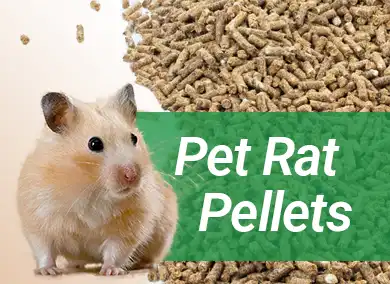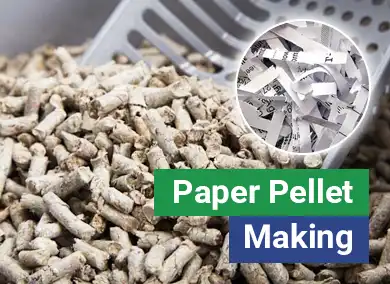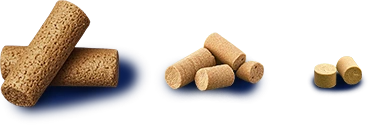Want to make goat farming more profitable? Traditional feeding often leads to guesswork, uneven nutrition, and wasted feed. Pellet feed is a more efficient way to feed-it boosts feed use, speeds up weight gain, and gets goats to market sooner, helping you cut costs and increase profits.
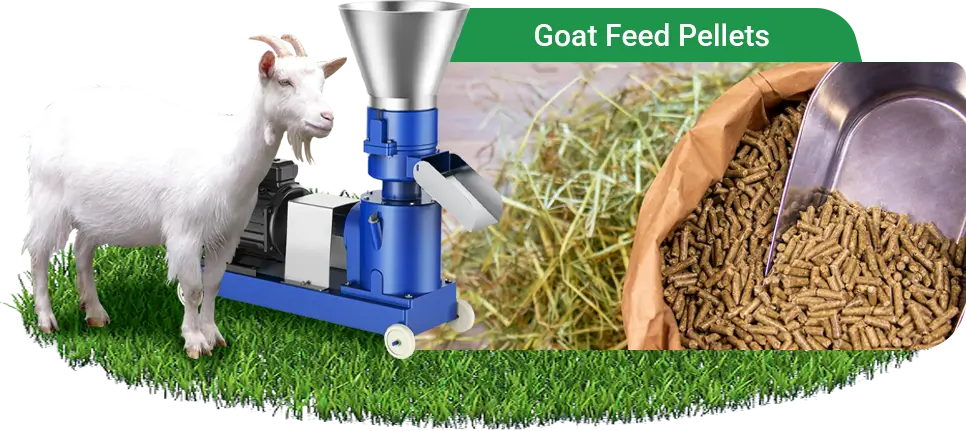
Why More Farmers Are Switching to Pellet Feed
Unlike traditional forage, pellet feed offers balanced nutrition, better storage, and easier feeding-all while saving space. It's designed to reduce waste and improve feeding efficiency, solving key challenges in goat farming.
| Common Issues | How Pellet Feed Solves |
| Seasonal forage shortages | Stable year-round supply; not affected by weather |
| Unbalanced nutrition | Scientifically formulated with 16–20% protein and balanced energy |
| Goats are picky eaters | Firm, uniform pellets with over 95% intake rate |
| High feed waste | Less dust, less spillage |
| Slow growth, delayed market readiness | Heat processing improves starch digestion and nutrient absorption |
| Time-consuming feeding, high labor demand | Easy to scatter or use with automated feeders |
| Mold and parasites | High-temperature processing kills harmful microbes and toxins |
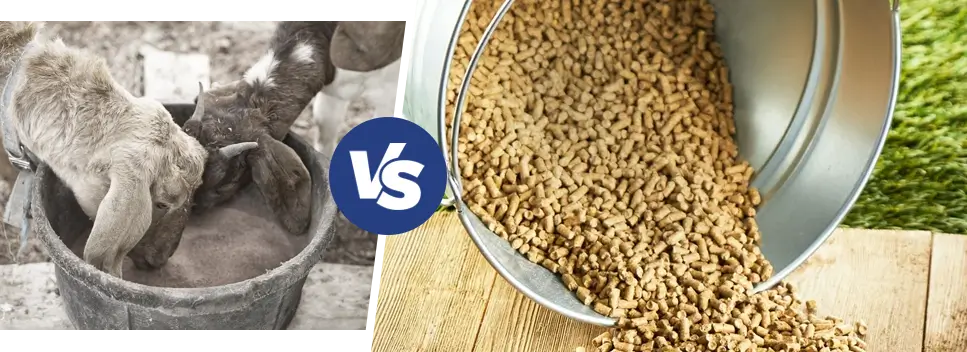
Pellet Feed Production Guide
Feeding goats isn't always easy. What to feed goats to gain weight? How to boost growth without high costs? How do I keep costs low while ensuring proper nutrition? Pellet feed covers all your feeding needs.
Goat Feed Ingredient
As ruminants, goats require a balanced mix of fiber, protein, and energy. Here are some recommended ingredients for making pellet feed for goats:
| Type | Examples | Purpose | Ratio |
| Energy | Corn, wheat, bran, sorghum | Add starch and energy, support weight gain | 30–50% |
| Protein | Soybean meal, cottonseed meal, rapeseed meal, peanut meal | Boost growth and fertility | 10–25% |
| Fiber | Alfalfa meal, corn stalk meal | Support digestion and rumen health | 15–30% |
| Oils | Soybean oil, rice bran oil | Increase energy, improve taste | ≤3% |
| Minerals | Salt, limestone, premix, yeast powder | Provide key minerals, aid digestion | 1–3% |
| Additives (optional) | Enzymes, probiotics, toxin binders | Improve digestion and immunity | 0.1–0.5% |
Data Source:Goats and their Nutrition & Fundamentals of Feeding Goats
How to Cut Feed Ingredient Costs
Use local by-products and affordable alternatives to keep pellet feed both nutritious and cost-effective. Feed prices often change with the seasons, so it's smart to buy key ingredients-like corn, wheat bran, or soybean meal-in bulk during harvest time or price dips. Dry and store them properly to reduce long-term costs.
Pellet Feed Processing: Step-by-Step
A 25kg bag of commercial goa feed pellets can cost $25–$40-expensive in the long run. Making your own feed is more affordable and lets you adjust the formula for different growth stages. The process is simple and easy to learn. It saves money and gives you better control over nutrition.
Here's how to do it:
- Prepare Ingredients: Get your raw materials ready-corn, soybean meal, wheat bran, grass powder, etc.
- Grind: Use a grinder to crush the ingredients into fine particles for better mixing and digestion.
- Mix: Blend all ingredients evenly according to your formula. Add salt, minerals, or premix as needed.
- Pellet: Feed the mixture into a pellet machine. Choose 2–5mm size depending on the goats' age.
- Cool: Let the hot pellets cool and dry to prevent mold.
- Store: Bag and seal the pellets. Keep them in a dry, well-ventilated place.
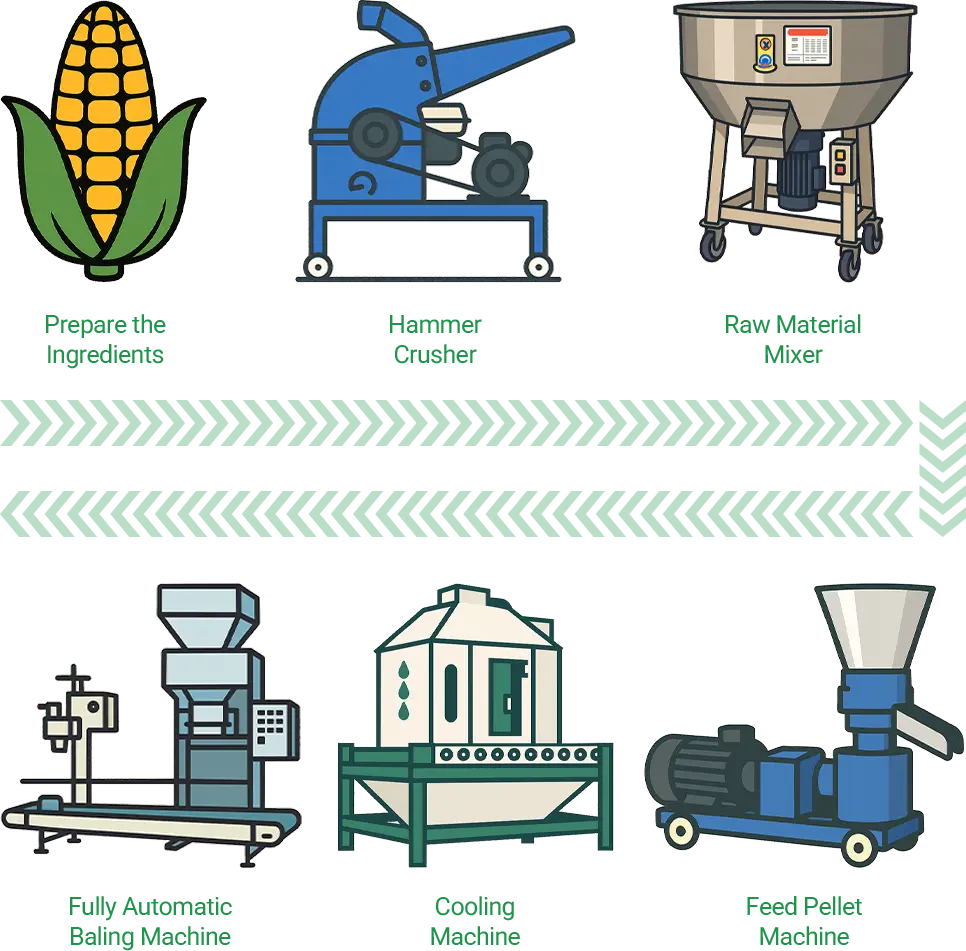
Interested in making your own pellet feed? We offer suitable pellet machines and complete production line solutions. Feel free to contact us anytime for more information.
Smart Feeding Guide
Goats have different nutritional needs at each stage of growth. How to feed goats, how much, and how often-it all matters. Here are some practical formulas and feeding tips to help you manage your herd more effectively.
Nutritional Needs & Goat Feed Formula
Early Nursing Stage (0–30 days)
Nutritional Focus: Mainly rely on mother's milk, gradually introduce milk replacer and starter feed to promote rumen development.
Suggested Ingredients:
- High-quality milk replacer or formula milk
- Cornmeal, soybean meal, wheat bran
- Vitamin and mineral premix
Weaning Transition (31–60 days)
Nutritional Focus: Reduce milk replacer, increase concentrate feed; provide quality roughage to support rumen stability.
Example Formulas:
- Formula 1: Corn 40%, Soybean meal 20%, Wheat bran 15%, Alfalfa meal 15%, Yeast powder 5%, Mineral premix 5%
- Formula 2: Corn 35%, Wheat 20%, Cottonseed meal 15%, Straw powder 20%, Premix + limestone + salt 10%
Growth Stage (61–120 days)
Nutritional Focus: High energy and protein to support rapid growth.
Suggested Ingredients:
Corn 35%, Soybean meal 20%, Wheat bran 15%, Hay meal 15%, Cottonseed or rapeseed meal 10%, Mineral premix 5%
(Optional: Add silage corn or beet pulp to improve palatability)
Fattening Stage (121 days and up)
Nutritional Focus: Higher energy density, slightly lower protein; control feed costs while maintaining good weight gain.
Economical Feed Options:
- Corn 40%, Wheat bran 20%, Cottonseed meal 15%, Straw or soybean stalk powder 15%, Premix + limestone + salt 10%
- Can also add local by-products like dried distillers' grains or sunflower meal to replace part of the soybean/cottonseed meal
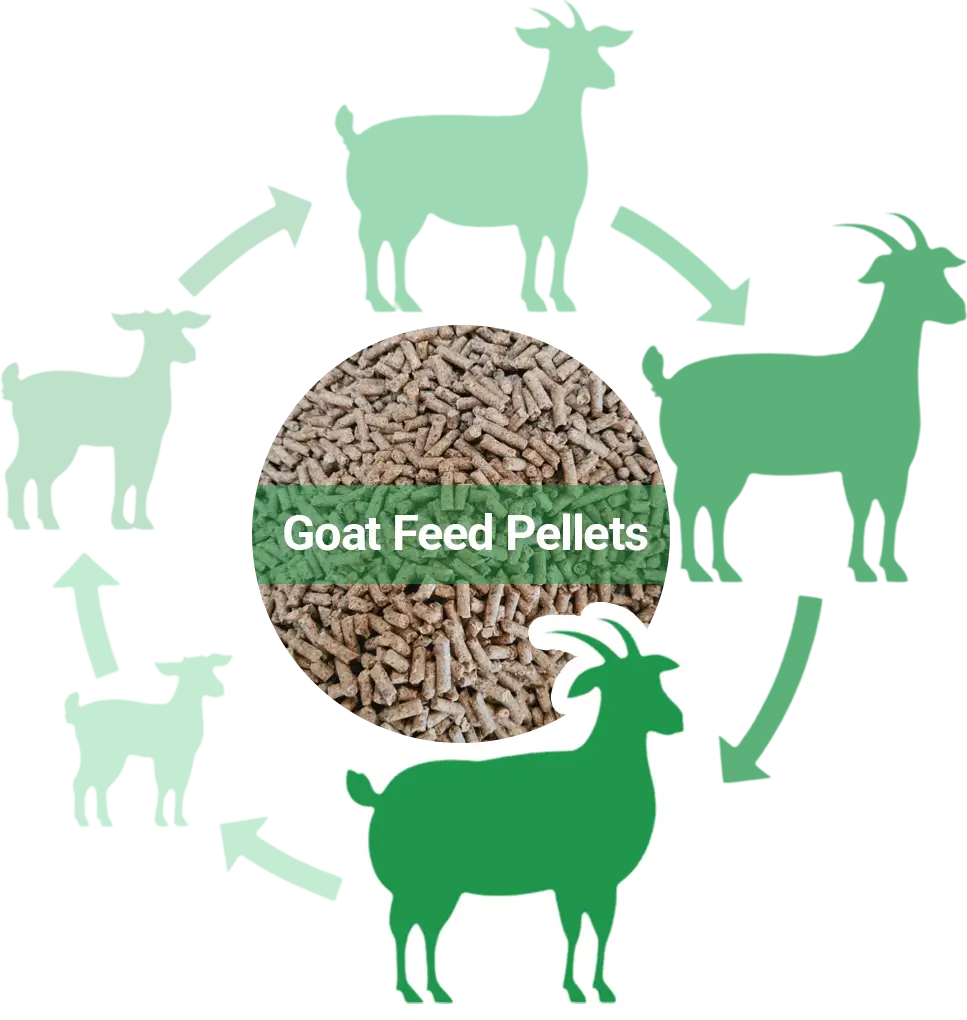
Recommended Pellet Sizes
| Age (Days) | Pellet Size | Notes |
| 0–30 (Nursing) | Powder or 1–2 mm | Use mainly milk replacer; small particles are easier to swallow |
| 31–60 (Weaning) | 2–3 mm | Helps transition to solid feed; easy to digest |
| 61–120 (Growth) | 3–4 mm | Goats can chew better; medium size improves intake |
| 121+ (Fattening) | 4–5 mm | Larger pellets support rumination and reduce feed waste |
Feeding Frequency & Tips
| Stage | How Often | What to Watch |
| Nursing | Every 2–4 hrs (first 3 days), then less often | Make sure they get colostrum; keep warm and clean |
| Weaning | 3 times a day | Cut milk slowly, add grain; watch digestion |
| Growing | 2 times a day | Give good roughage; keep diet balanced |
| Fattening | 2 times a day, same time daily | Control feed cost; aim for steady growth |
Feeding Tips
- Same time, same amount – Helps goats eat better and stay calm.
- Switch feed slowly – Mix old and new feed over 7 days.
- Pay attention – Check leftovers and poop; adjust if needed.
- Clean water always – Especially when using dry pellets.
- Check the feed – No mold, clumps, or bad smell before feeding.
Common Issues with Pellet Feed and Solution
Storage & Mold Prevention
Keep feeding in a dry, well-ventilated place-away from moisture and direct sunlight. Use pallets to keep bags off the ground. Check for clumps, bad smell, or color changes. If needed, add mold inhibitors like calcium propionate for extra safety.
Improving Palatability
If goats don't like the feed, it might be too hard, too long, or too plain. Try shortening pellets to 3–4 mm, and mix in molasses, oils, or yeast flavor enhancers. Keep feed fresh and reduce dust for better intake.
Preventing Diarrhea During Feed Changes
A sudden switch in feed can cause diarrhea. Mix old and new feed over 5–7 days to help goats adjust. Adding probiotics or electrolyte vitamins during the transition can support digestion and reduce stress.
Real Stories: How Pellet Feed Made a Difference
More and more farmers are switching from traditional feeding to pellet feed-not just because it's trending, but because it works. Here are two real cases that show how pellet feed can truly boost results in goat farming.
From Traditional Feeding to Pellets: A Clear Boost in Results
📍 India | Punjab | Independent Farmer
Background:
Mr. Singh runs a mid-sized goat farm in Punjab with around 250 goats. He used to feed them mainly fresh grass, wheat bran, and cornmeal using traditional methods.
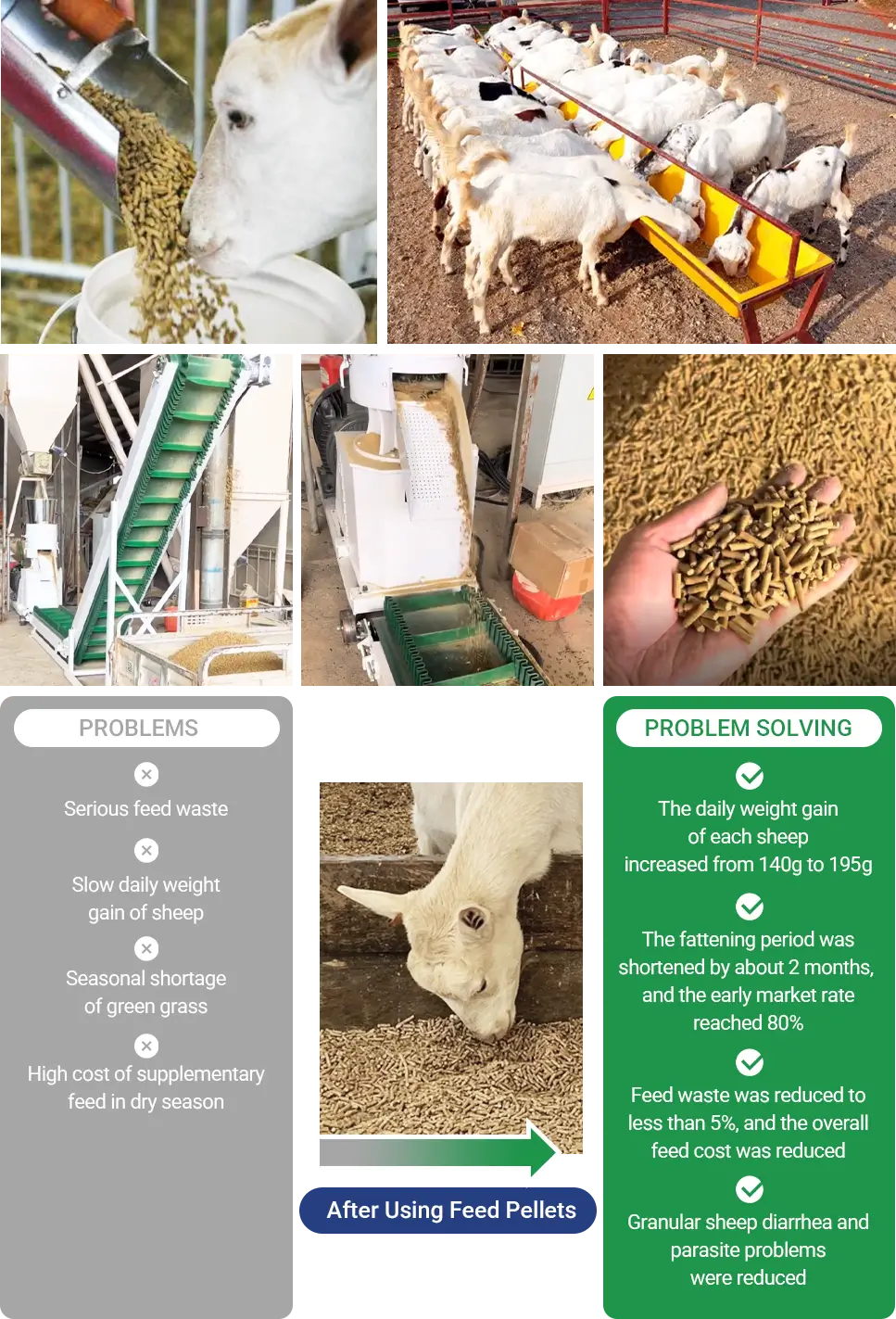
User Feedback:
"This was our first time using pellet feed, and it worked even better than expected. The goats grew faster and used less feed. Fattening took less time, and we felt more confident about selling. Now we're planning to expand-just need a few more hands, but overall, it's still easy to manage."
From 11 Months to 8: The Secret Behind Faster Fattening
📍 Pakistan | Hyderabad | Farming Cooperative
Farm Background:
A goat farming cooperative based in Hyderabad, focusing on meat goat fattening. They used to feed goats a mix of fresh grass and cornmeal, with around 600 goats sold annually.
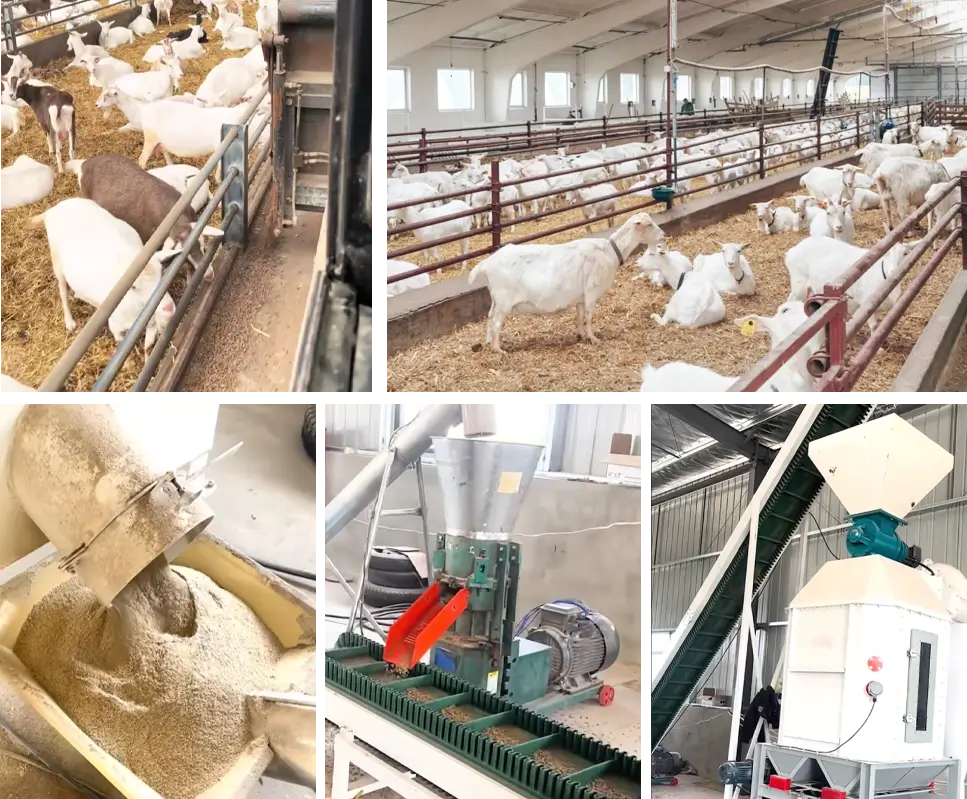
Before Using Pellet Feed:
- Fattening took 11–12 months per goat
- Weight at sale varied, affecting meat quality and price
- Kid survival rate was around 80%, with frequent disease issues
After Switching to Pellet Feed (9 months in use):
- Fattening reduced to 8–9 months; daily gain steady at 185–200g
- Kid survival rate rose to 90–94%; better breeding success
- More consistent weight and meat quality at sale
- Overall profits increased by about 25%
Whether you want to save feed, cut labor, or grow goats faster-pellet feed makes a real difference. It's more nutritious, efficient, and easier to manage. That's why more farmers are switching.
We specialize in feed equipment, with proven experience serving farms and cooperatives in multiple countries. Our pellet machines and full production lines are easy to use, stable, and work with a variety of raw materials and farm sizes.
Got questions? Feel free to reach out anytime!



